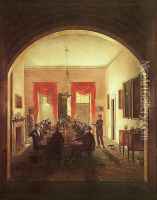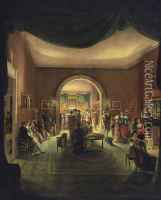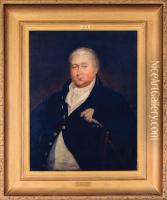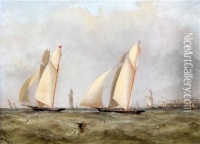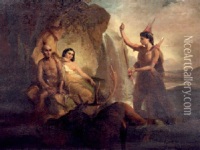Henry Sargent Paintings
Henry Sargent, also known as Henry Winthrop Sargent, was an American painter primarily remembered for his historical and portrait works. Born on June 26, 1770, in Gloucester, Massachusetts, he was part of the early generation of painters in the United States who contributed to the nation's budding artistic legacy during the post-Revolutionary War era. Sargent was the brother of famed miniature painter John Sargent and the father of landscape architect Henry Winthrop Sargent.
Sargent's artistic journey began in his youth, and he received his education in both America and Europe, which was quite common for artists of his era seeking to refine their skills. After his studies, Sargent returned to the United States and became an active participant in the cultural life of Boston, Massachusetts. He was a founding member of the Massachusetts Charitable Mechanic Association and engaged in the intellectual circles of his time, which included artists, writers, and thinkers who were shaping the cultural landscape of the early Republic.
Sargent's works are characterized by their adherence to the neoclassical style that was predominant during his lifetime. His paintings often depicted scenes from history with a particular emphasis on the moral and virtuous aspects of their subjects, which aligned with the neoclassical ideals of beauty, morality, and rationality. Among his notable works is 'The Landing of the Pilgrims at Plymouth, 11th Dec. 1620,' which showcases his interest in American history and his ability to convey a narrative through art.
Despite his contributions, Henry Sargent is not as widely recognized as some of his contemporaries, such as Gilbert Stuart or John Singleton Copley. His works, however, hold historical significance as they reflect the burgeoning American identity and the cultural aspirations of the United States in the early 19th century. Sargent passed away on February 25, 1845, leaving behind a legacy that, while modest in comparison to the great masters of American art, remains a valuable part of the tapestry of the nation's artistic heritage.
